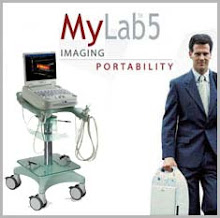What’s the Difference? New, Used or Refurbished Ultrasound?
In the past 5 years, I’ve gotten these questions plenty of times. I’ve heard the following repeated:
“I want to buy a new ultrasound system, but it’s outside my budget. What can I do?”
“I’ve got this great deal on this used ultrasound machine, why should I buy it new?”
“Do you have any refurbished ultrasound equipment?”
In order to see what’s best for your practice, let’s define what each one means:
New Ultrasound System – This means you are purchasing an ultrasound system that’s never been used before and it normally comes straight from the manufacturer. Although, there are some circumstances where distributors purchase large lots of ultrasound systems for re-sale. It’s like buying an automobile at a new car dealership.
Used Ultrasound Machine – This means that you are purchasing an ultrasound system directly from another clinician or another 3rd party source. Most of the time, they usually don’t come with a warranty nor training. It is similar to purchasing a car from a used car lot or from a classified ad.
Refurbished Ultrasound Equipment – This means that you are purchasing it direct from the manufacturer or a 3rd Party Distributor who has taken the system in and performed various quality checks to make sure it’s in working order. They usually come with a limited warranty and some ultrasound training. It is similar to purchasing a certified used car.
Which one should I purchase?
This will depend on what your current and future goals, specialty and your budget.
For example, in thyroid ultrasound, I would never recommend purchasing used or refurbished equipment. The standards of care of changed the past 5-10 years, that some of these older systems are obsolete. For example, 10 years ago DOPPLER imaging wasn’t a requirement, but it is now. The older systems will have difficulty connecting to EMR’s, since they were analog systems.
Furthermore, the new ultrasound machines in the market really streamline your workflow. Your measurements are automatically inputted into a report page and you can create mini macros of your impressions. For this specialty, it’s always best to go with a new ultrasound system.

